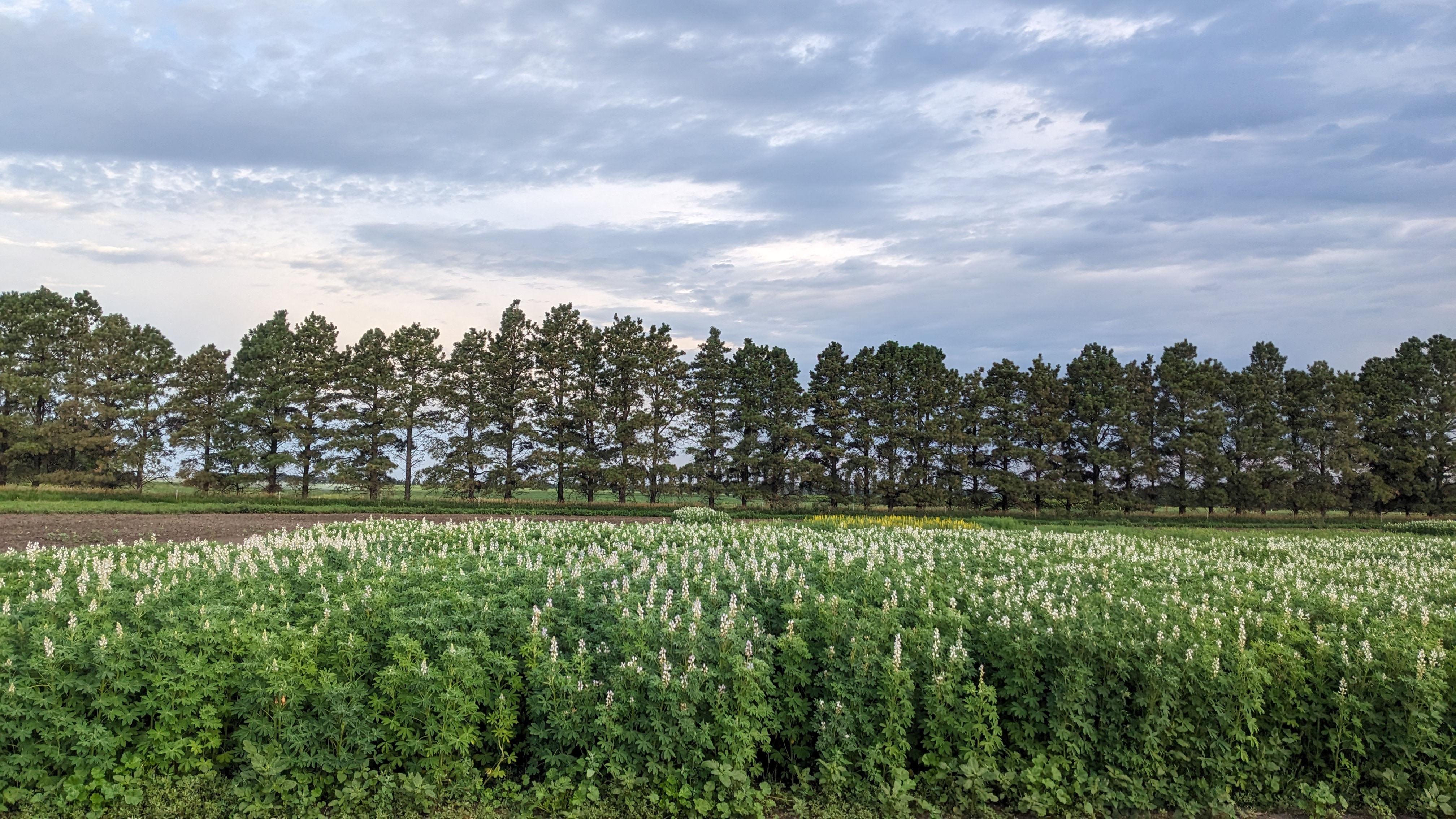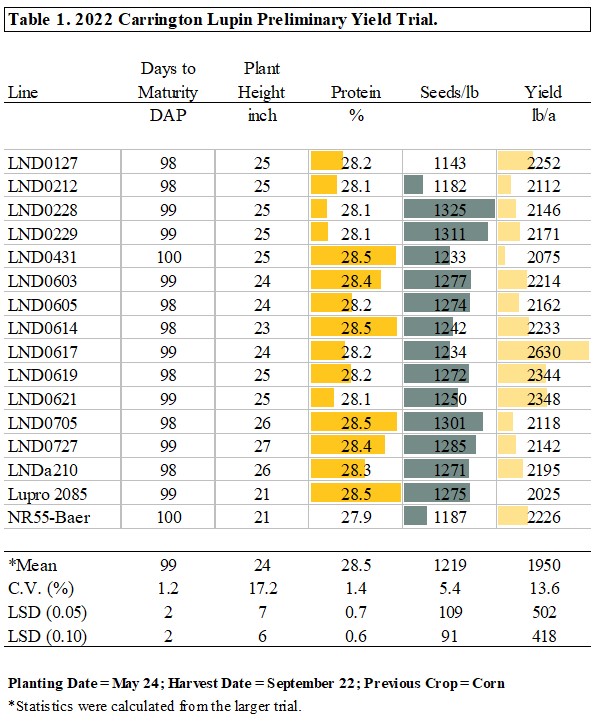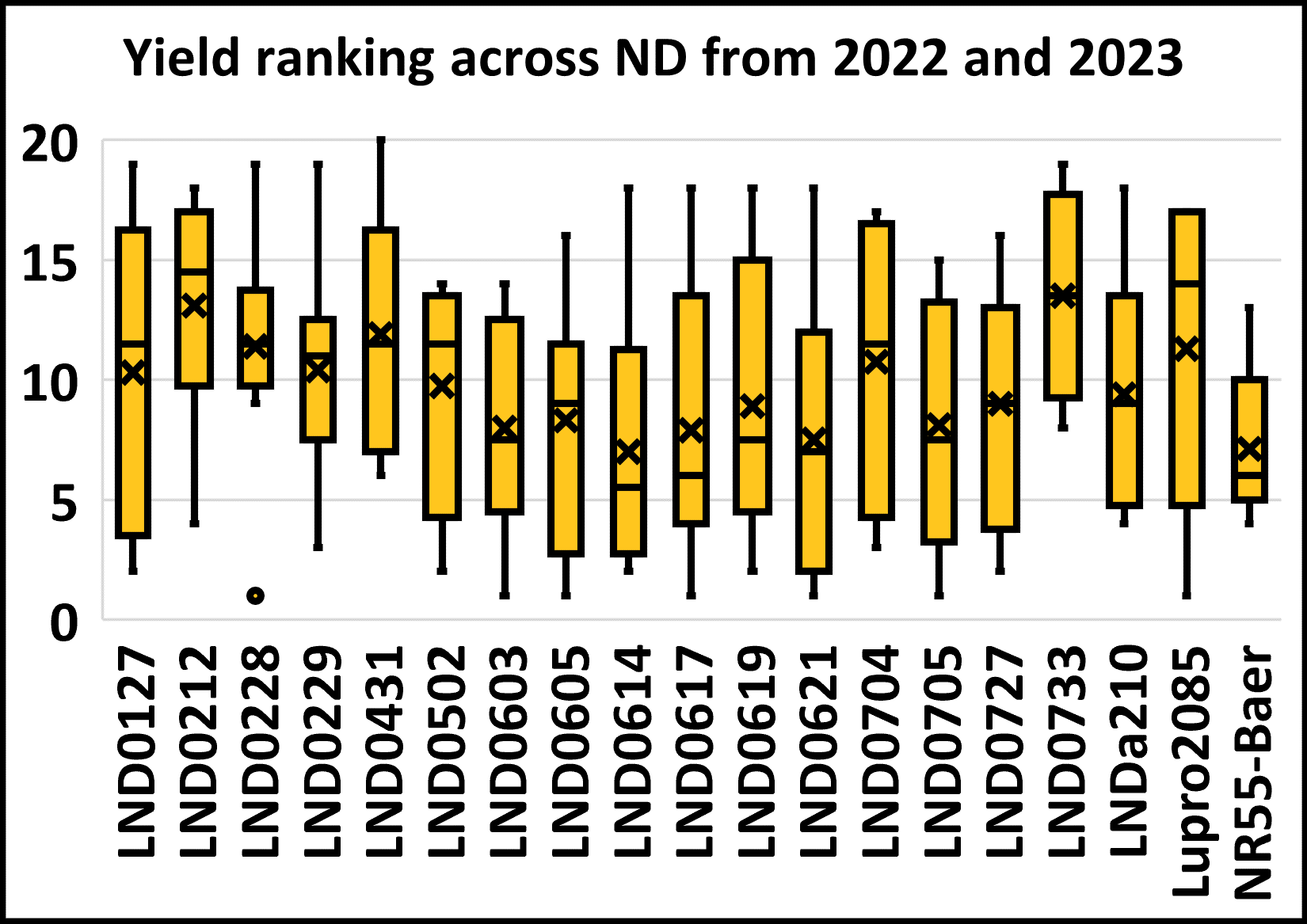Lupins, a legume, are commonly utilized in many regions of the world including Australia, South America and the Mediterranean region, as a food, feed and cover crop. The market for lupin is very diverse. Lupin can be used as green manure or ground into flour to use as a wheat flour alternative. Lupin can also be canned or eaten fresh. Lupins have the nutritional characteristics to become a large player in the plant-based protein market.
For consumers, lupins are a super food.
- Contain all essential amino acids
- High protein and low starch combination mean a low glycemic index
- High fiber and rich in ferritin
- Emulsifying properties to replace allergens like butter and eggs
For producers, lupins provide an alternative legume option.
- Fix nitrogen
- Low phosphate requirement
- Tap root to access deep water during dry conditions
- High harvest ease since pods are not at soil surface
No commercial sweet white lupin varieties are well adapted to North Dakota. To address this gap, the CREC has been screening germplasm, making selections and advancing breeding lines. Lines were evaluated primarily for maturity date, yield, seed size and sweetness. In 2022, fourteen preliminary lines underwent variety trials. Variety trials were planted in Carrington, Dickinson, Hettinger, Langdon, Minot, and Williston. Each trial consisted of three to four replicated plots arranged in a randomized complete block design.
Advanced breeding line slections of sweet white lupin.
In Carrington, the selected lines all reached maturity within 100 days after planting (Table 1). The protein content within the lines was similar with a range of 27.9 to 28.5%. Yield ranged from 2025 to 2630 pounds per acre. To assess the yield stability, variety trials were again executed statewide in 2023 with three additional lines. Yield was compared across all year and statewide locations using yield rank. No single line stood out as superior in the statewide tests as seen by the similar yield means in Figure 1. Individually, line LND0614 had ranked in the top three at both Hettinger and Langdon in 2022 and 2023. Line LND0617 was the most consistent at Carrington with a ranking of 1 and 4.
Table 1. 2022 Carrington lupin preliminary yield trial.
Since lupin are consumed in various types of products, lines are undergoing further evaluations to aid in identifying the best lines for variety release. For example, in a preliminary test, green pods were harvested, shelled and cooked for four of the lines in the preliminary variety trial. Differences were noted for texture and flavor. Alkaloid testing will continue to ensure the lines remain sweet under various environmental conditions. As the plant-based protein market space continues to grow, lupins are an excellent option to meet the growing consumer demand for plant-based protein and provide an additional legume option for producers.
Figure 1. Yield rank results from the 2022 and 2023 statewide preliminary yield trials. Median is denoted by a line across the bar. Mean is denoted with an “x”.
Acknowledgements: This research was a collaborative effort of Mike Ostlie, Kristin Simons, Blaine Schatz (Carrington), Justin Jacobs (Williston), John Rickertsen (Hettinger), Bryan Hanson (Langdon), Glenn Martin (Dickinson), Eric Eriksmoen (North Central, Minot) and their staff.
Funding for this project was made possible by a grant/cooperative agreement from the U.S. Department of Agriculture (USDA) Agricultural Marketing Service through the North Dakota Department of Agriculture. Its contents are solely the responsibility of the authors and do not necessarily represent the official views of the USDA.



